What to Expect in the 11+ Exams

What is the 11+ exam?
If you are here wondering, what in the world is 11+? Then I recommend you read our earlier blog on the exam’s history, timetable and process for application.
Essentially, it is a standardised entrance exam for children seeking a place in UK Grammar Schools for Year 7.
They are famously tricky exams and require a lot of skills that are not necessarily taught in schools, which is intended to highlight candidates with gifted intelligence. They usually take place in the first 2 weeks of September when they start Year 6.
In this blog, we will take a look at some example questions that they would see on exam day so you can be prepared when the day comes, although we highly recommend contacting a private 11+ tutor to help you unlock the mysteries of these unique exams.
What should my child expect in the 11+ exams?
There are different methods of testing your child for 11 Plus depending on the examining body and school.
The two major examining bodies for the 11 Plus are GL and CEM (Centre for Evaluation and Monitoring) but some schools insist on writing their own papers. Others include ISEB, SET CSSE.
Nevertheless, the format is similar throughout and the topics are well defined.
There are 4 exams that will cover English, maths, verbal and non-verbal reasoning.
Most grammar schools are switching to GL for the 2023–24 admissions season. If you're applying for your child to enter Year 7 in September 2024, they will likely be taking a GL exam.
Maths
Questions in the exam tend to be based on Key Stage 2 Maths concepts.
Problem-solving and multistep word problems are common as examiners are looking for children to ‘think outside the box’ and use a range of skills.
The 11+ Maths syllabus follows the National Curriculum. The following topics are covered in the syllabus:
- Long addition
- Long multiplication
- Long subtraction and division
- fractions
- decimals
- time
- area and perimeter
- prime numbers and prime factors
- averages
- distance, speed, and time
- graphs and charts
- calculating angles
- reflection and rotation
- percentages
- simple ratio and probability
- sequences and number patterns
- shapes and
- volume of cubes and cuboids
English
Exams tasks could include comprehension, spelling, punctuation or grammar and questions will generally be based on skills covered in the Key Stage 2 English curriculum.
The 11+ English syllabus has the following sections:
- Comprehension: The student has to be able to gather information from a given piece of text. The student must also display an understanding of literary techniques and character and must be able to summarise sections of the given passage in comprehension.
- Vocabulary: The student must show an understanding of synonyms and antonyms. They must be able to identify the root of words and whether they come from a Latin or Greek root.
- Grammar: The following will be tested:
- Verbs
- Nouns
- Adjectives
- Plurals
- Prefixes and suffixes
- Compound words
- Active and passive voice
- Punctuation: Parentheses, commas, full stops, semicolons, and hyphens
Verbal reasoning
Children will be tested on their ability to solve problems involving words, numbers and letters. Common questions include sequences, relationships, codes and word meanings (synonyms and antonyms). A wide vocabulary is essential for success!
Verbal reasoning part measures the student’s ability to understand written texts and draw conclusions from them. The syllabus is as follows:
- Word meanings: Opposites, similar words, word connections, etc.
- Making words: Hidden words, insert a letter to make a word, move a letter, etc.
- Vocabulary: Advanced compound words and archaic language are often included as an answer.
- Maths: Number series, related numbers, etc.
- Codes: Letter connections, word letter codes, word number codes
Non-Verbal and Spatial Reasoning
This area tests children on their ability to see patterns and relationships between 2 and 3D shapes. Common types include sequences and patterns, similarities and differences and code-type questions.
The non-verbal reasoning part of the exam tests the student’s ability to mentally manipulate shapes and patterns in two and three dimensions. The topics included are:
- Series
- Like figures
- Codes
- Odd one out
- Matrices
- Merge shapes
- Cubes
- Reflections
- Rotation
- Folding and punching
- 3D shapes
What do the 11+ Questions look like?
11 + exams for Maths and English follow a familiar format similar to what you will see in KS3 and GCSE but a lot longer and more formal than KS2 exams.
There are exceptions where some questions are in traditional format but ask you to go the extra mile.
Others use the knowledge you may know well, but in a format you will have never seen before in a school textbook. You will often need to think outside of the box on how to use them
For the 2 reasoning exams, there is no other place you may see this kind of question so it is important to practice all of the categories that can appear so you are not wasting time on getting used to the format.
This highlights the need for targeted practice and professional help when preparing for the exam.
Parents, consider this a challenge and ask yourself, could you do these without any help even now?
Maths
Usually 2 sections of a paper with roughly 35-40 minutes to complete each section. Section A is collected before you can start section B.
The tests are always non-calculator and some equipment is needed like a ruler and protractor and maybe a compass.
Maths Example Questions

You are expected to find a solution within 3 minutes to stay on track.
You are expected to find a solution within 3 minutes to stay on track.
Keep Reading for the solutions!
English
Usually 2 Sections to a paper with one based on reading and one based on writing.
You will have roughly 40 minutes to complete each section, including 10 minutes at the start where you should read through the provided passage you will be examined on.
Unlike the maths paper, Section A is not collected before you can start section B so you can go back if you have time.
Reading Section Example Question

You are expected to write an answer within 2 minutes to stay on track.
Writing Section Example Question
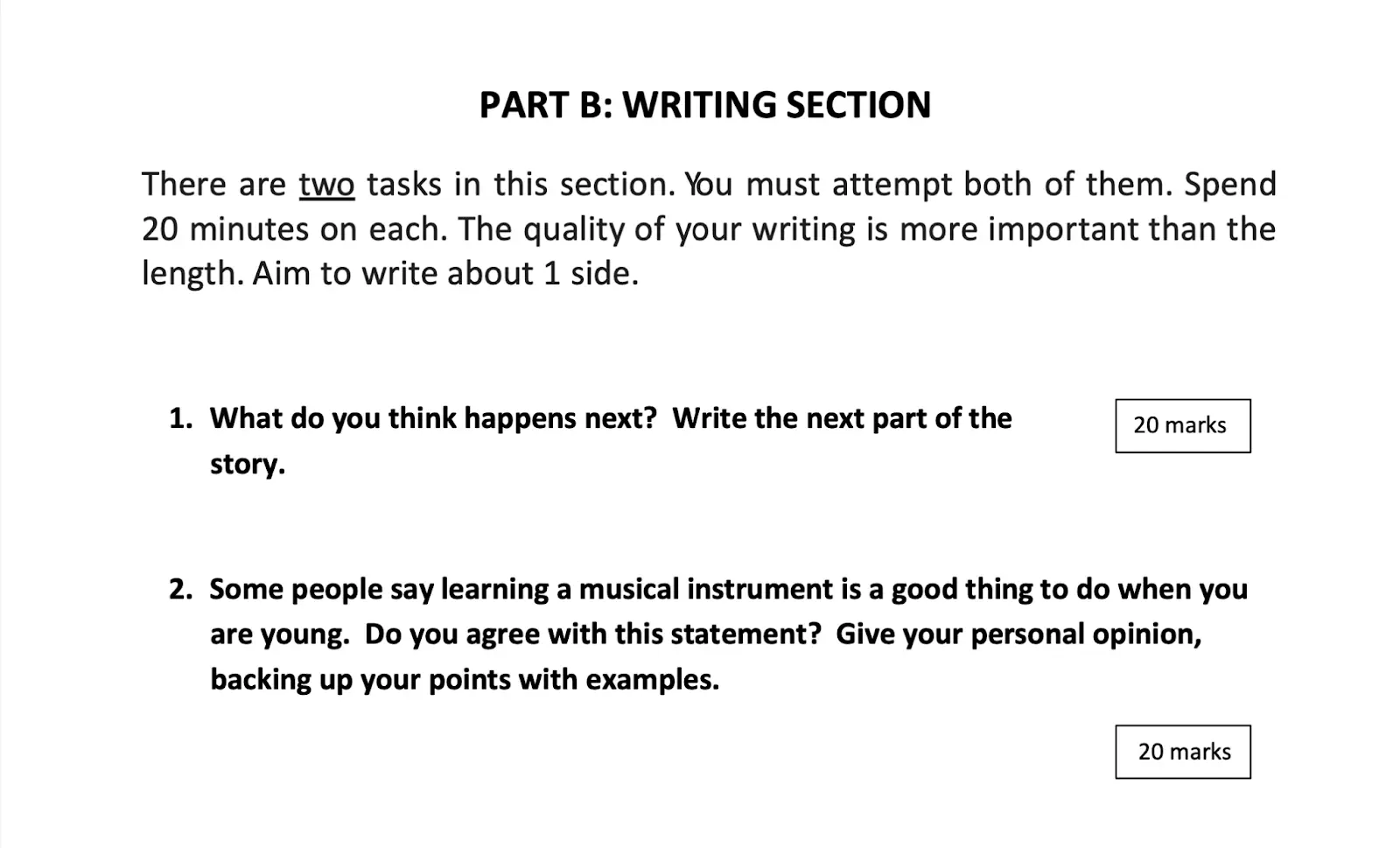
You are expected to write an answer within 20 minutes to stay on track.
Keep reading for the solutions!
Verbal reasoning
This exam is usually one of the shortest and hardest to finish on time as it contains a lot of multiple-choice questions that are deceptive in how long they can take to figure out.
Usually, it is 45-60 minutes depending on the type and amount of questions. Some past papers expected you to answer 80 questions in 50 minutes - so if you hit a section you are struggling with, move on and come back to it. Some other categories will come easier to you than others.
It is common not to finish all of the questions on this paper so make sure you mark an answer for all of the questions, even if you haven't manage to work on it.
There will be multiple sections where you are expected to answer several questions within on of the verbal reasoning question categories such as ‘making words’ and ‘codes’
Making Words Example Question
Keep reading for the solutions!
Codes Example Question

Keep reading for the solutions!
Non-verbal reasoning
This exam is usually one of the shorter papers lasting 45-60 minutes depending on the amount of questions.
It contains 4 sections each of which will ask a lot of questions of the same type - such as series or nets & 3D shapes.
Again, if you hit a section you are struggling with, move on to another that may come easier to you. There is no time for pride in a short exam!
It is common not to finish all of the questions on this paper so, again, make sure you mark an answer on the answer sheet at random if you have no time left.
Series Example Question

Keep reading for the solutions!
Nets & 3D Shapes Example Question
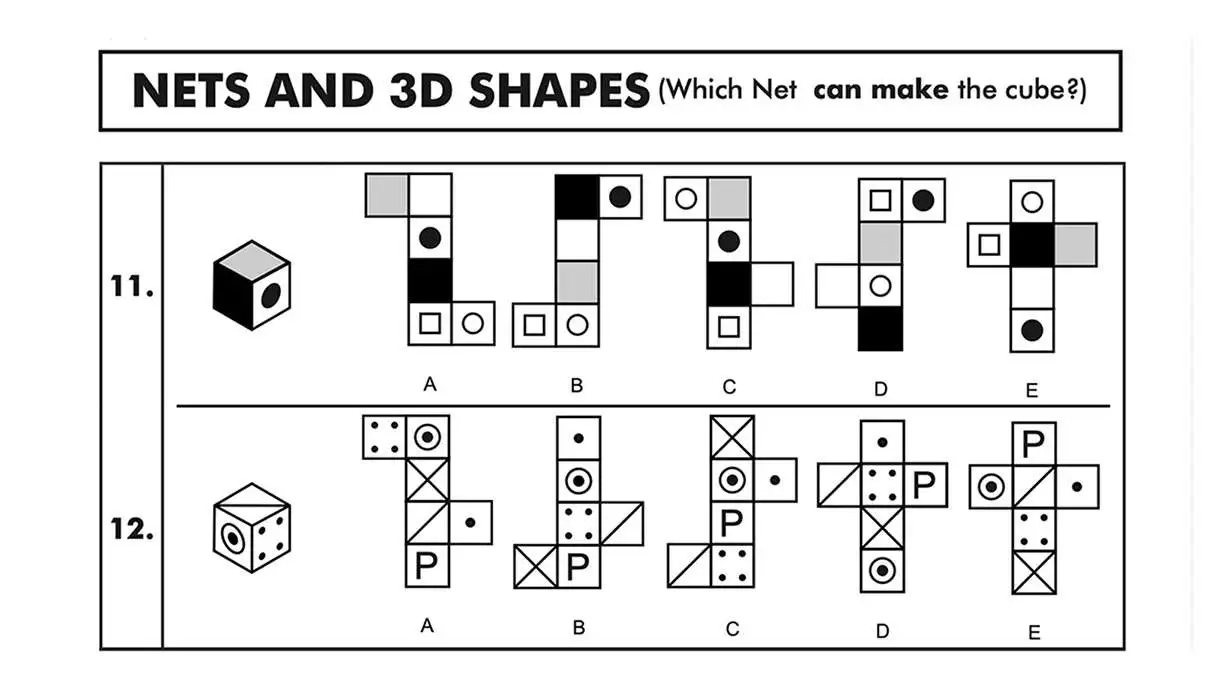
Keep reading for the solutions!
How do you answer the 11+ Questions?
When rubbing out and changing answers, children need to be thorough and ensure their answer is clear, especially in Multiple Choice formats.
As mentioned before, these exams are a test of your critical thinking and application of knowledge more than the knowledge itself - hence the need for really targeted practice.
The questions are often phrased to throw you off - where normally you would be expected to use all of the information int he question to find the solution, in the 11+ Maths exam it is not always the case! Below are the solutions to the previous examples.
Parents, did you get them right?
Maths
Jottings, workings and notes! Always make notes and check your working at the end.
You will not get marked down for doing this - just make sure you do not make it unclear where the answer is.
Read the question carefully! Most 11+ questions are two-step or multi-step, so if you slip up at the start, all of the future answers will be wrong.
Have a really firm grasp of place value, times tables and fraction, percentages and decimals - this is essential for 11+ success.
Maths Example Question Solutions
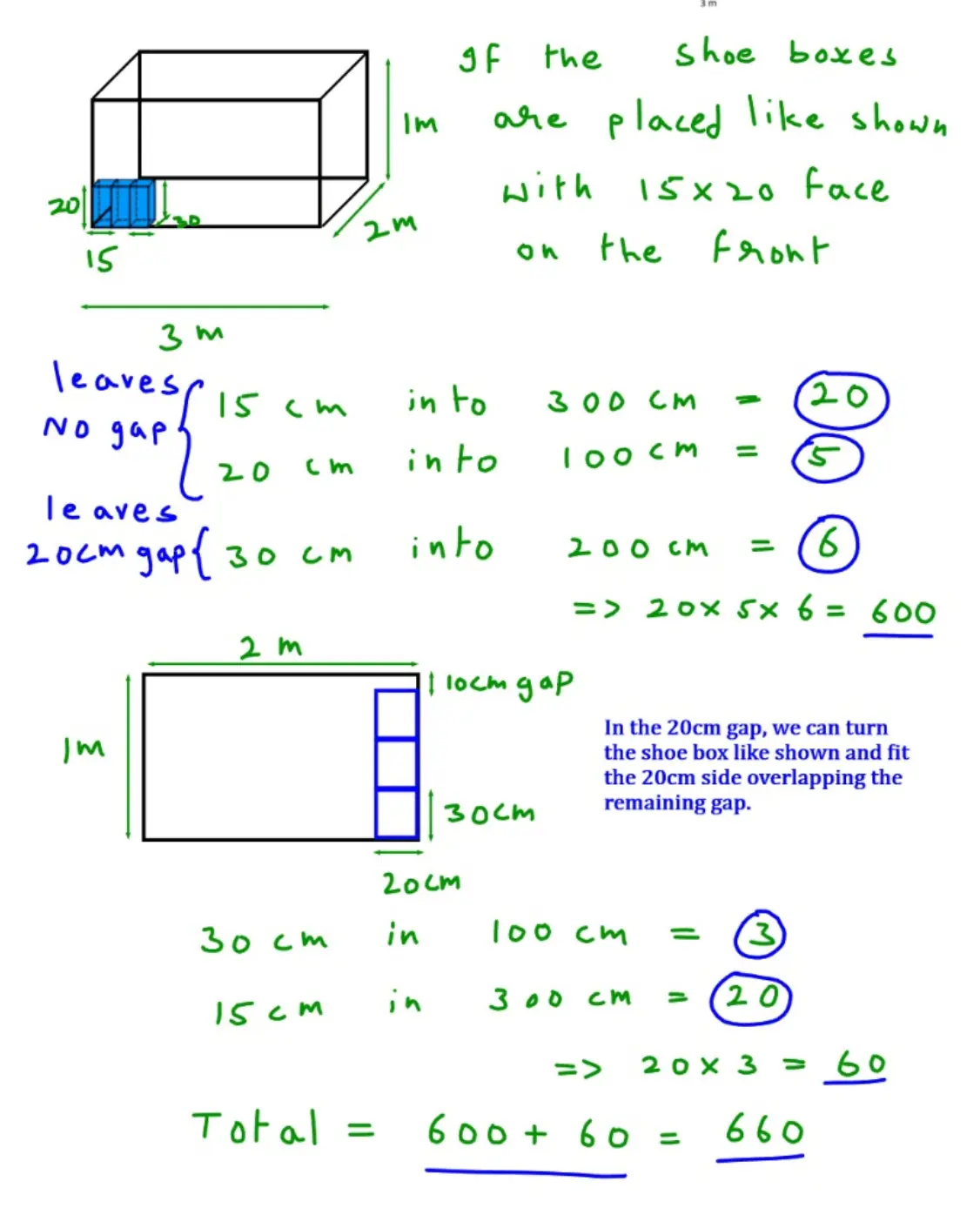

English
Read through the text carefully once before you look at the questions.
In comprehension tasks, check every answer against the text and ensure you’ve found evidence to prove your answer.
In proofreading tasks where you must check for spelling issues, bear in mind that there are unlikely to be more than 1 or 2 questions where the answer is ‘N’ for no mistake!
English Reading Example Question Solution
English Writing Example Question Solution
Example Question Solution
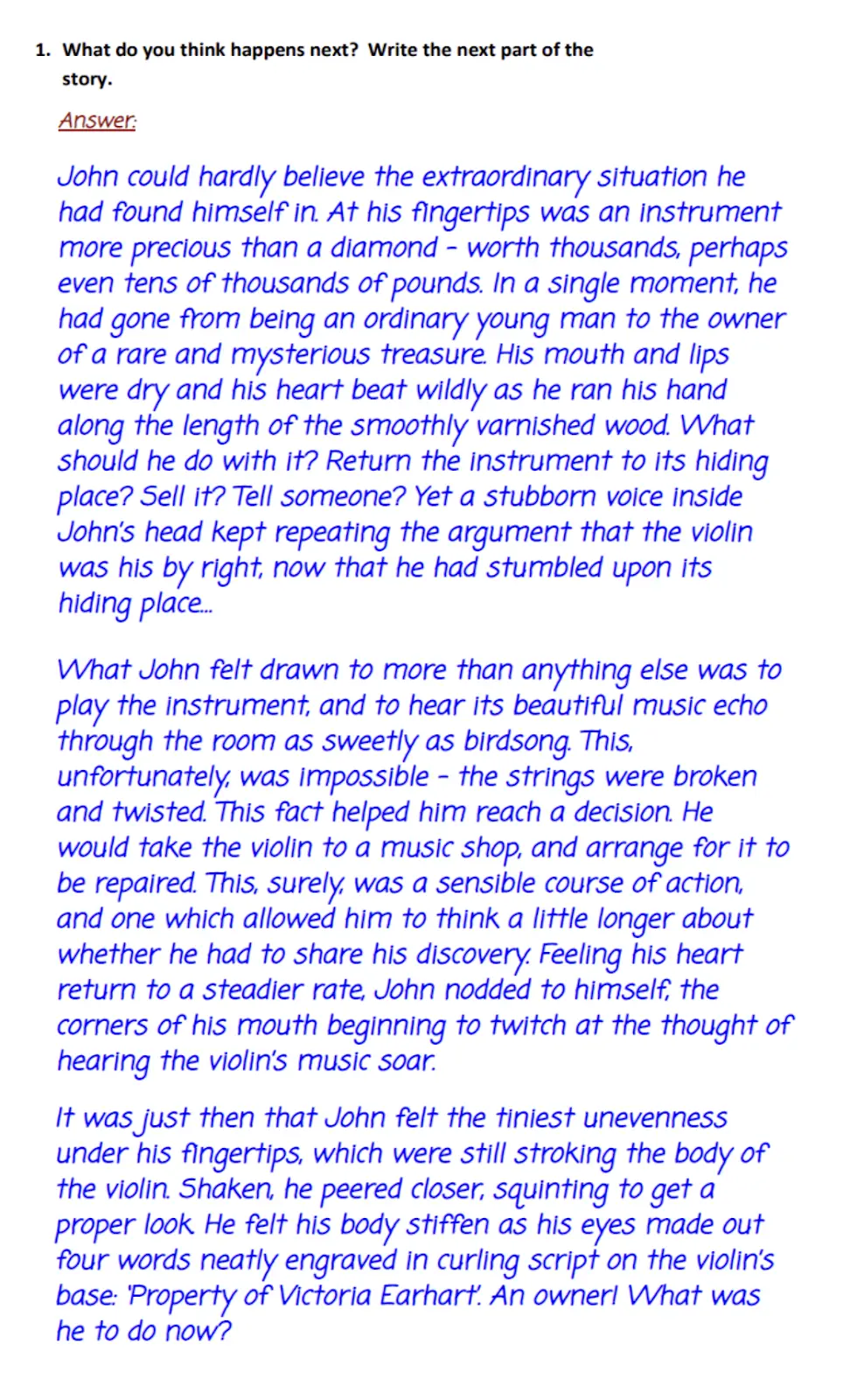
Verbal reasoning
Vocabulary questions can be the trickiest type in this area. If you don’t know the meaning or the words, look carefully at their roots and any prefixes or suffixes for clues as to their meanings.
Look and listen carefully in the practice section (if there is one), some question types look very similar and it is important you read any instructions really carefully. The language they use is essential to finding the pattern for the solution.
Making Words Example Question Solutions
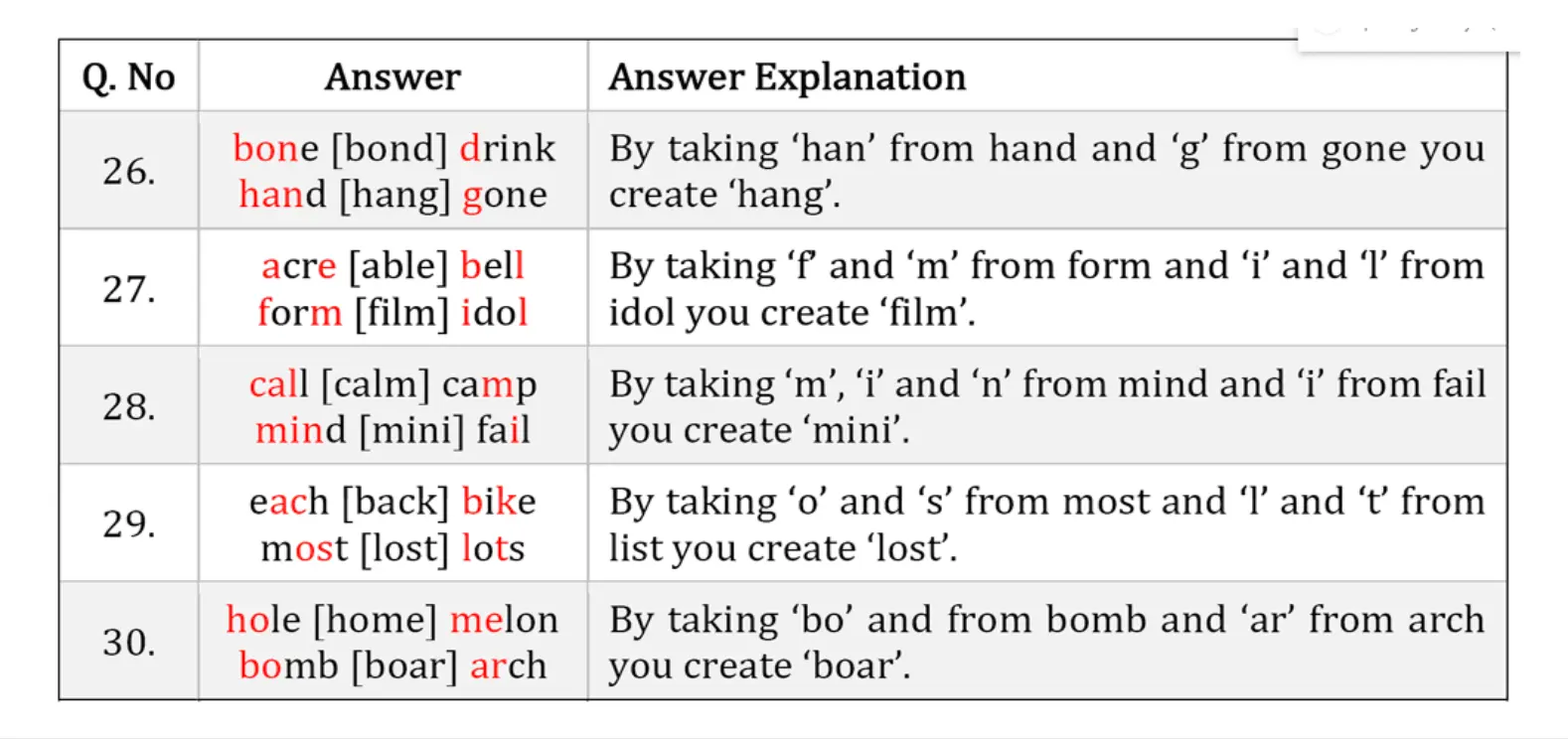
Codes Example Question Solutions

Non-verbal reasoning
Look carefully for similarities and differences between – this is key to many Non-verbal Reasoning questions.
Patterns feature heavily in Non-verbal Reasoning too, look for alternative patterns or parts of patterns which increase or decrease in size or number.
Think ‘What has stayed the same, and what is different?’ when you look at patterns and shapes.
This can help you spot ‘like’ and ‘unlike’ shapes and determine what the pattern is to get from the shape before to get to the shape after for the examples given.
Series Example Question Solutions
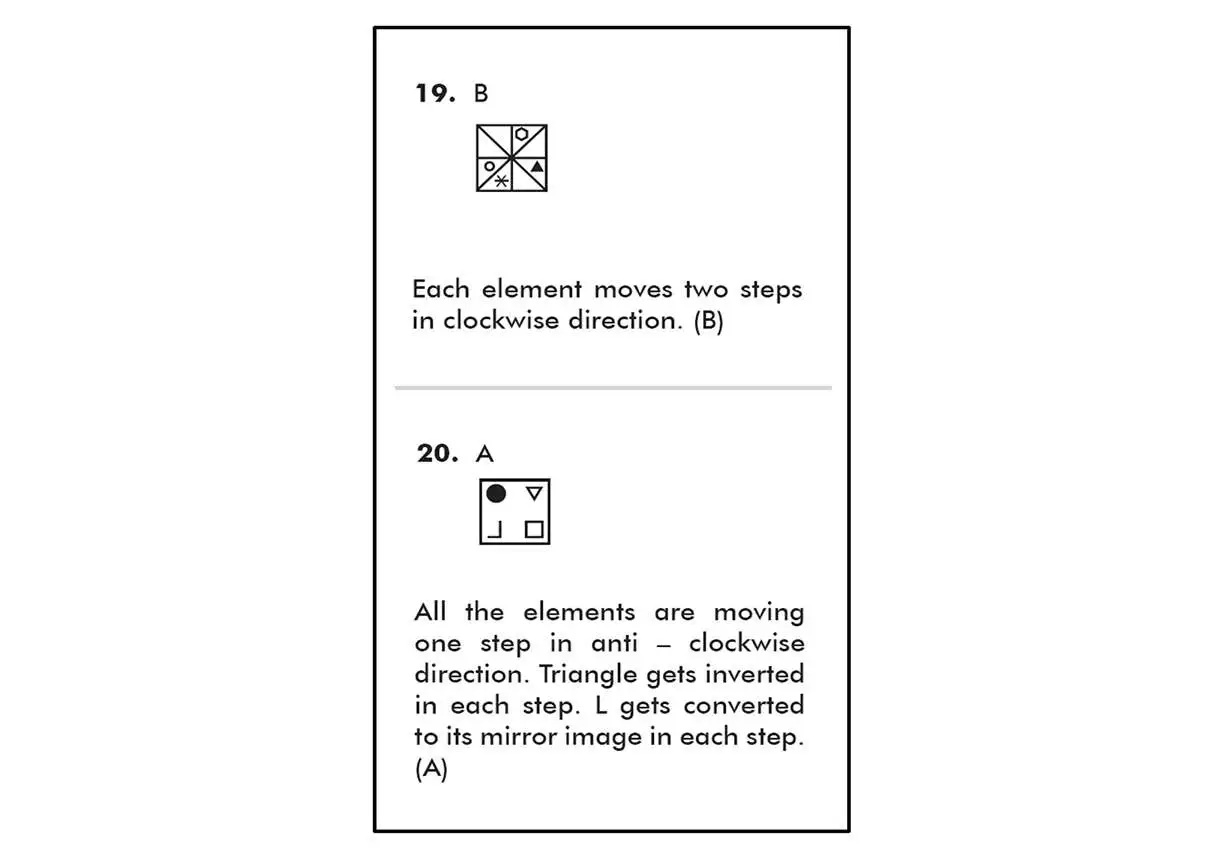
Nets & 3D Shapes Example Question Solutions

What equipment is needed in the 11+ exam?
In most cases, stationery will be supplied for the exam, or a list of requirements will be supplied well in advance.
Make sure your child knows how to use a protractor and ruler properly if these are allowed. They will be essential to getting the marks in questions that require them.
What to do when you are running out of time in the 11+ exam.
Many children worry about running out of time in the exam or finding the questions too hard and there are some important things to remember if this happens.
- There is no expectation to get 100% to pass the exam, or even answer every question. It is really important that questions they do answer, are answered accurately and carefully.
- If a question is simply too difficult, they should make an educated guess and move on. Some types of question with come easily to different students than others.
- Don’t leave any questions blank if you can avoid it. With the Multiple-choice papers, it is worth taking a random guess if you have no time to look through some questions properly.
- Practice good pacing – do some timed practice with your child to make sure they are working efficiently. Finding and completing your favoured type of questions first and returning to tricky ones later is a valid technique, but its important to be disciplined when you have spent long enough on a question.
What to do when you finish early in the 11+ exam.
If your child finishes the paper with plenty of time to spare, it is likely they may have made some mistakes.
Practise how to check their answers with them, as many children don’t understand how to do this effectively and just check they haven’t missed any!
Encourage them to go back to the first question and rework as many answers as they can before their time runs out.
How are the 11+ exam results calculated?
There are three variables considered when standardising your child’s 11 Plus score. In this way, the 11+ exam boards try to make a fair assessment of their grade based on multiple factors:
Different test papers
Rather than adding up the marks of each paper, the standardisation process means each paper is given equal weight in your child’s overall score. The number of questions on a test paper and the time allowed for it can differ.
If a Verbal Reasoning test has 80 questions and takes 50 minutes, while a maths paper has 100 questions and takes 45 minutes, simply adding the “raw scores” of the two together will not give equal weight to the results of both tests, and neither will an average score.
Your child’s age
Exam boards and schools recognise that a difference in age can have a significant impact on ability. Students in Years 7–8 have vocabulary sizes of around 6400 word, increasing to about 9400 by Year 10–12. On average learning over 1000 words per year.
One child taking the test might be born on the first day of the school year (September 1st) while another might be born on the last day (August 31st).
With what amounts to a whole year’s difference in their ages which can cause a huge disadvantage to the younger child.
The difficulty of the paper
The exam board setting and marking the test may apply statistical information about how difficult the paper is, based on tests that they conduct among a sample of children either nationally, or in the 11+ area.
If the paper is considered to be less difficult than the previous year then the pass mark would be higher to ensure that there aren’t more passing students than places available.
Below is an example of how scores are modified based on age. Please note that this is only an illustration, and this “look-up” table will be different for every test.

How can I get help with 11+ Preparations?
There are many great places online to get free exam papers from previous years and practice sheets for each category, however without the right guidance, preparing for an 11+ exam can be an impossible task.
Developing a skill for deep critical thinking is essential for these exams which is not demanded in schools at this age.
Sherpa is an online tuition platform built to help you find the perfect tutor for your needs, whatever they may be. Our aim is to provide affordable and accessible, top-quality tuition from qualified teachers and tutors.
Our 11+ specialists are ready and willing to help you prepare for the exam. Click the link below to start your search and meet with a tutor for a free 20-minute introduction in our online classroom today.
Find 11+ Online Tutors starting from £20 per hour
Good luck and remember, your Sherpa tutor is with you every step of the way!

Parents
Students
Looking for a tutor?
Sherpa has hundreds of qualified and experienced UK tutors who are ready to help you achieve your goals. Search through our tutors and arrange a free 20 minute introduction through our industry-leading online classroom.
Find a TutorSimilar Articles







